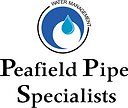Hydrostatic testing plays a vital role in ensuring the integrity and safety of pipelines. By subjecting pipelines to controlled levels of pressure, hydrostatic testing helps identify potential weaknesses or leaks before they become critical issues. In this article, we will delve into the different types of equipment used in hydrostatic testing, shedding light on their functions and significance.
Pressure Testing Basics
Before diving into the various equipment used in hydrostatic testing, it is essential to understand the fundamentals. Hydrostatic testing involves filling the pipeline with a liquid, typically water, and pressurizing it to a predetermined level. This test pressure is usually higher than the pipeline’s operating pressure to ensure robustness. The key principles underlying hydrostatic testing include the need for accurate pressure measurement, the presence of reliable pressure relief devices, and the utilization of appropriate test pumps.
Common Types of Equipment Used in Hydrostatic Testing
Pressure Gauges
Pressure gauges are crucial for accurately measuring and monitoring the pressure during hydrostatic testing. These devices come in various types, including analog and digital gauges, and provide real-time pressure readings. Accurate pressure measurement is vital to identify any deviations from the desired pressure levels, allowing prompt corrective actions.
Pressure Relief Devices
To ensure the safety of both personnel and equipment, pressure relief devices are employed during hydrostatic testing. These devices are designed to relieve excessive pressure, preventing potential damage or catastrophic failures. Common types of pressure relief devices include relief valves and rupture discs, which are strategically installed at critical points along the pipeline.
Test Pumps
Test pumps are indispensable equipment used to pressurize the pipeline during hydrostatic testing. These pumps generate the required pressure to simulate operating conditions. Various types of test pumps are available, such as hand-operated, electric, and pneumatic pumps. The selection of a test pump depends on factors like the pipeline’s size, test pressure, and accessibility.
Pressure Testing Tools
Pressure testing tools are essential for creating reliable connections and ensuring accurate pressure transmission during hydrostatic testing. These tools include fittings, adapters, and clamps, which help establish leak-proof connections between the testing equipment and the pipeline. Advancements in pressure testing tools have led to increased efficiency and improved precision during the testing process.
Specialized Equipment for Hydrostatic Testing
Pigging Devices
Pigging devices are specialized tools used during hydrostatic testing to remove debris, liquids, or other contaminants from the pipeline. These devices, known as pigs, travel through the pipeline, scraping and cleaning its inner walls. Pigging devices play a vital role in maintaining pipeline integrity and preventing blockages that could compromise the testing process.
Flow Meters
Accurate flow measurement is crucial during hydrostatic testing to determine the rate at which the testing liquid is being pumped into the pipeline. Flow meters provide real-time data on the fluid flow, ensuring the test conditions remain consistent. Different types of flow meters, such as ultrasonic, magnetic, and turbine flow meters, are utilized based on specific requirements.
Data Acquisition Systems
Data acquisition systems are advanced equipment that collects, records, and analyzes data during hydrostatic testing. These systems enable real-time monitoring of pressure, flow rates, and other parameters, providing valuable insights into the behavior of the pipeline under test. Integration with other equipment, such as pressure gauges and flow meters, enhances data accuracy and facilitates comprehensive analysis.
Safety Considerations in Hydrostatic Testing
Ensuring safety during hydrostatic testing is paramount. Personnel involved in the testing process must wear appropriate personal protective equipment (PPE), including gloves, safety glasses, and protective clothing. Safety valves and relief systems are installed to prevent overpressurization, and emergency shutdown procedures are established to address any unforeseen incidents promptly.
Conclusion
Hydrostatic testing remains an essential practice to validate the structural integrity and reliability of pipelines. The various equipment discussed in this article, such as pressure gauges, pressure relief devices, test pumps, pigging devices, flow meters, and data acquisition systems, collectively contribute to a successful and safe testing process. As technology advances, we can expect further innovations in hydrostatic testing equipment, enhancing accuracy, efficiency, and overall pipeline safety. By employing the right equipment and adhering to strict safety protocols, hydrostatic testing ensures that pipelines meet the highest standards of performance and integrity.
